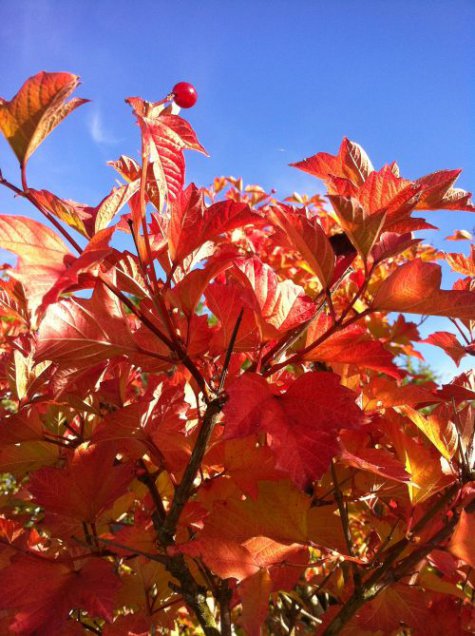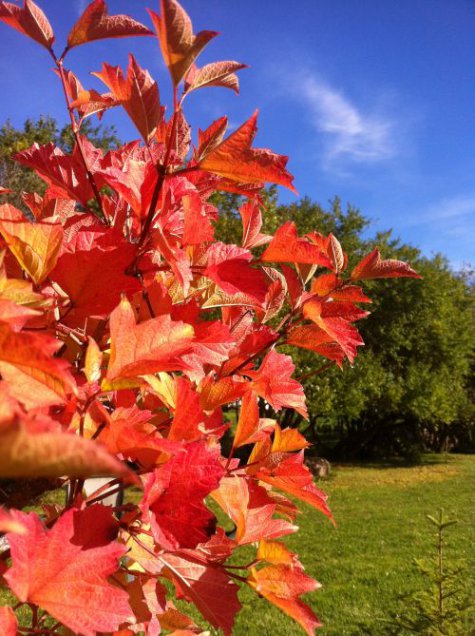Beautifully coloured Guelder rose
Photos Kristel Vilbaste
Translation Liis
There are few fruits on Guelder roses in Tartu
Guelder rose; European cranberry bush; Rose elder Harilik lodjapuu Viburnum opulus
In autumn all trees and shrubs with beautifully coloured leaves or fruits attract our attention but the Guelder rose is a real beauty.
The Guelder rose grows nearly everywhere in Estonia, more frequently in West Estonia but nowhere in large numbers. We can certainly find it in humid broadleaf woodlands, wooded meadows and banks of water bodies, also at the seashore. The Guelder rose remains a shrub despite the “-puu”, tree, in its Estonian name, growing 3-4 metres high on the verges of forests. It is considered as a long-lived species with its up to 50 years. The three-lobed leaves remind of maple leaves and are in places colouring fiery red with a purple tinge.
As ornamentals in city parks cultured forms with foliage turning yellow in autumn are used.
Seen from a distance the berry clusters of the Guelder rose remind of rowanberry bunches. Bright red and glossy, with a diameter of about a centimetre, they contain a large and flat seed – thus a drupe. The raw berries are considered to be slightly toxic. They have a somewhat insipid taste and an unfamiliar smell. With night frosts the “toxicity” disappears and the berries are quite edible. Among Slavonic people the Guelder rose has always been very popular: in the kitchen, in folk art and song lyrics.
There are Guelder rose berries only patchily this year: because of the cold there were few insects in June, and the Guelder rose flowers are pollinated by them.










